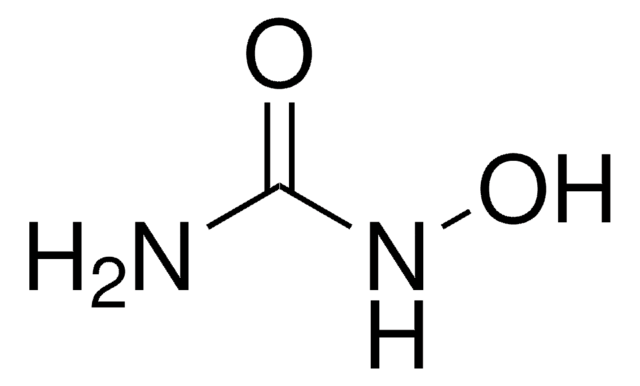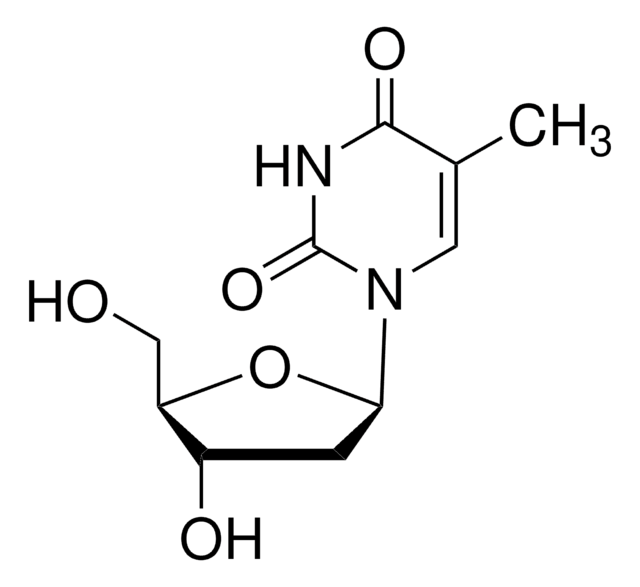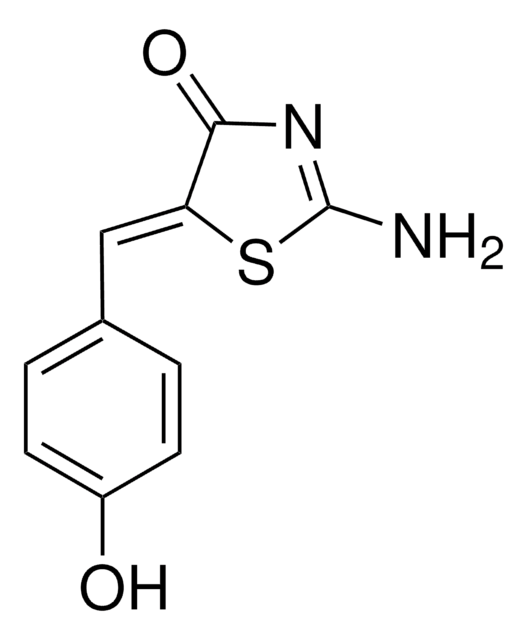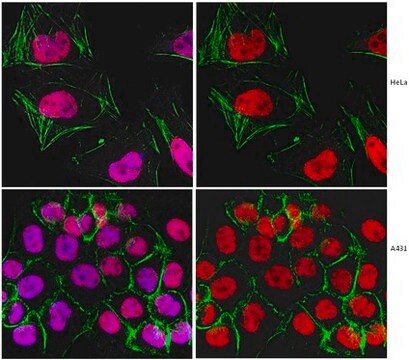H8627
Hydroxyurea
98% (elemental analysis), powder, RNR inhibitor
Sinônimo(s):
Hydroxycarbamide
About This Item
Produtos recomendados
product name
Hydroxyurea, 98%, powder
Nível de qualidade
Ensaio
98%
forma
powder
cor
white
solubilidade
H2O: 50 mg/mL
temperatura de armazenamento
2-8°C
cadeia de caracteres SMILES
NC(=O)NO
InChI
1S/CH4N2O2/c2-1(4)3-5/h5H,(H3,2,3,4)
chave InChI
VSNHCAURESNICA-UHFFFAOYSA-N
Informações sobre genes
human ... CA1(759) , CA2(760) , CYP1A2(1544) , RRM1(6240) , RRM2(6241) , RRM2B(50484)
Procurando produtos similares? Visita Guia de comparação de produtos
Descrição geral
Aplicação
- for cell cycle synchronization in MCF-7 human breast carcinoma cells, Schizosaccharomyces pombe, primary root of seedling
- as a drug for treating the parasite Leishmania mexicana in cell viability and cell cycle assay
- as an inhibitor in the cell adhesion and motility assay in Caki control and CD9 knockdown cells
Ações bioquímicas/fisiológicas
Características e benefícios
Palavra indicadora
Danger
Frases de perigo
Declarações de precaução
Classificações de perigo
Muta. 1B - Repr. 2
Código de classe de armazenamento
6.1C - Combustible acute toxic Cat.3 / toxic compounds or compounds which causing chronic effects
Classe de risco de água (WGK)
WGK 3
Ponto de fulgor (°F)
Not applicable
Ponto de fulgor (°C)
Not applicable
Equipamento de proteção individual
Eyeshields, Gloves, type P3 (EN 143) respirator cartridges
Certificados de análise (COA)
Busque Certificados de análise (COA) digitando o Número do Lote do produto. Os números de lote e remessa podem ser encontrados no rótulo de um produto após a palavra “Lot” ou “Batch”.
Já possui este produto?
Encontre a documentação dos produtos que você adquiriu recentemente na biblioteca de documentos.
Os clientes também visualizaram
Conteúdo relacionado
Apoptosis, or programmed cell death (PCD), is a selective process for the removal of unnecessary, infected or transformed cells in various biological systems. As it plays a role in the homeostasis of multicellular organisms, apoptosis is tightly regulated through two principal pathways by a number of regulatory and effector molecules.
Nossa equipe de cientistas tem experiência em todas as áreas de pesquisa, incluindo Life Sciences, ciência de materiais, síntese química, cromatografia, química analítica e muitas outras.
Entre em contato com a assistência técnica
![[Glu1]-Fibrinopeptide B human ≥90% (HPLC)](/deepweb/assets/sigmaaldrich/product/structures/122/537/7ead5c32-cb67-4325-9ce7-66c8dec24bdd/640/7ead5c32-cb67-4325-9ce7-66c8dec24bdd.png)








